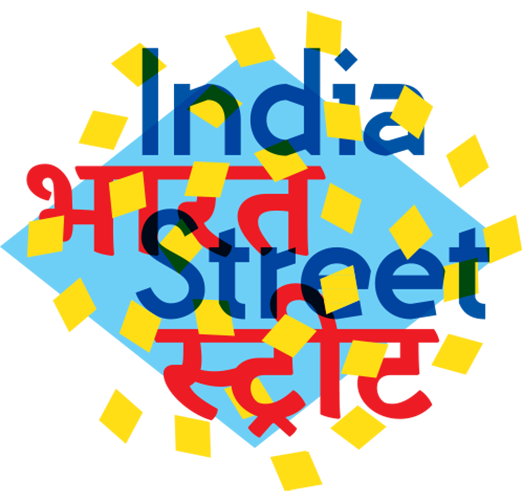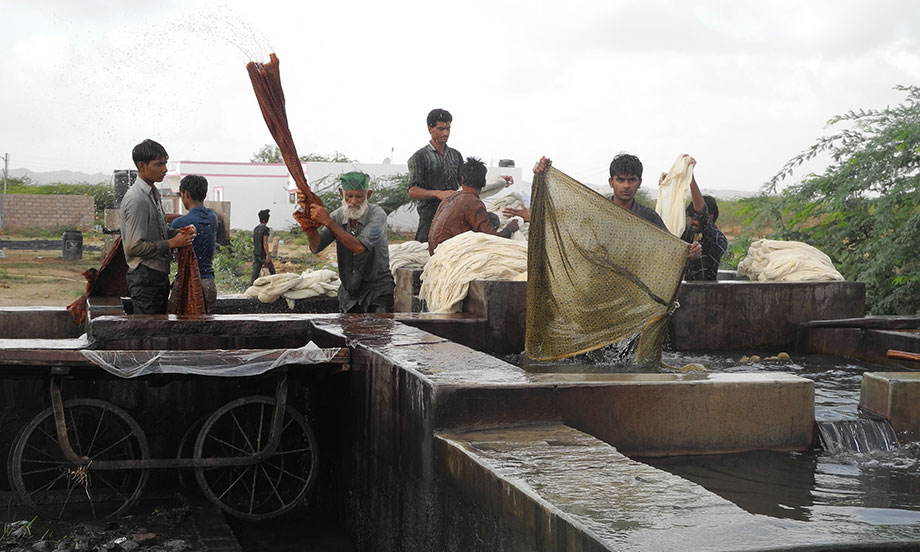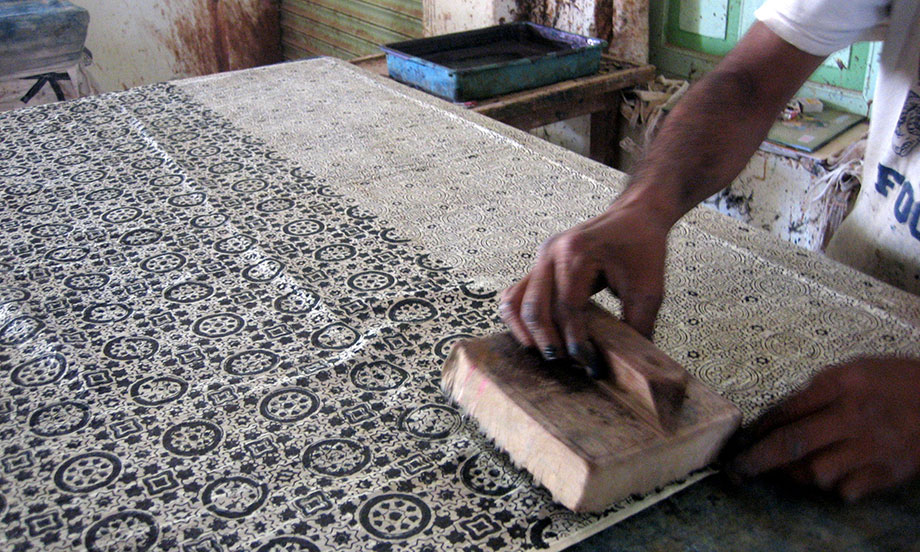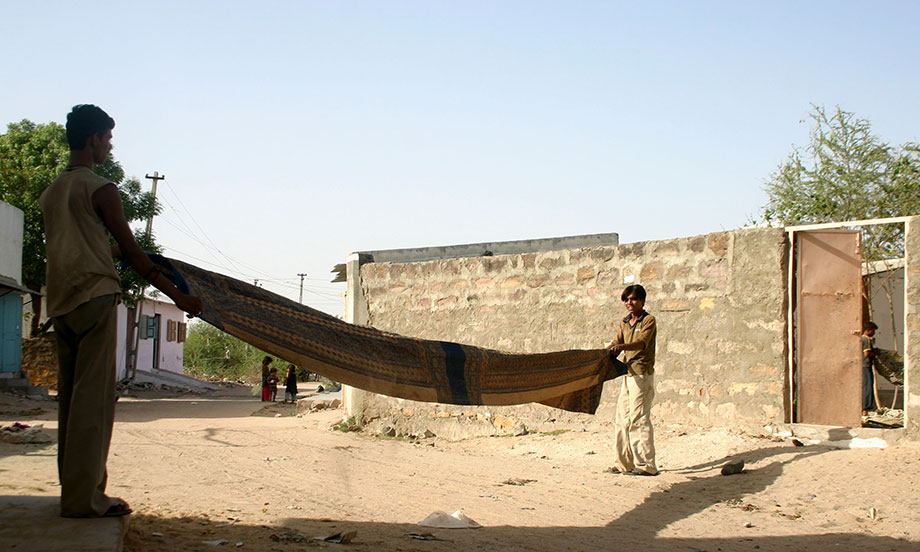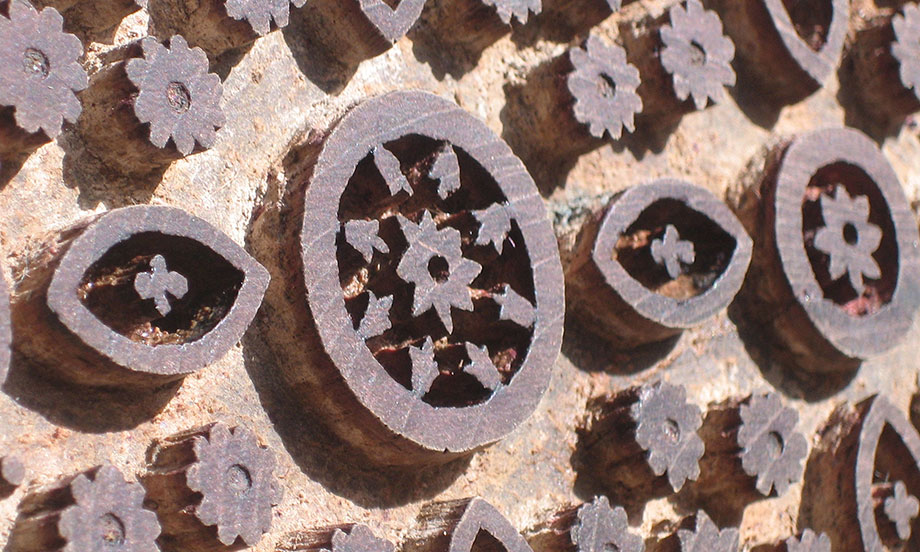Ajrakh
Katy West
Ajrakh is an ancient craft combining block printing and dabu (resist) dying on cotton cloth with natural dyes. It originated along the banks of the River Indus, now dividing India by Gujarat and Rajasthan with the Sind Province in Pakistan. The fabrics were used locally, and from the 7th Century were exported to the Middle East. Indeed the term Ajrakh may have derived from the Arabic ‘Ajrak’, meaning blue.
Ajrakh traditionally was worn by men within nomadic Muslim tribes in the form of lungis (shorts), gamchas (shawls) and faintas (turbans), while the producers of the craft have come from both Muslim and Hindu communities. The herders in nomadic pastoral communities would typically wake before dawn to tend their livestock. It is said for this reason that the fabrics were printed on both sides (a unique and distinguishing mark of Ajrakh where the pattern is replicated on the reverse) so that the herder waking and dressing early would not be caught with their dress inside out.
Ajrakh uses a particular palate of natural dye as symbols from its Sindi origin; indigo blue for sky, Madder red for earth, mud-lime resist for the night stars and turmeric yellow for the sun, They are used to make graphic and mirrored patterns on the cloth inspired by abstract tessellating patterns and architectural motifs.
Emlyn Firth developed his glitch-patterned scarves with Soyab Khatri in Ajrakpur. Khatri is one of the oldest family names attached to the tradition, although Emlyn’s products do not adhere to all the strict rules of Ajrakh. The term ‘New Ajrakh’ is used to distinguish contemporary deviations from ‘True Ajrakh’, the traditional double-sided cloth of specific design and colour worn by men.
